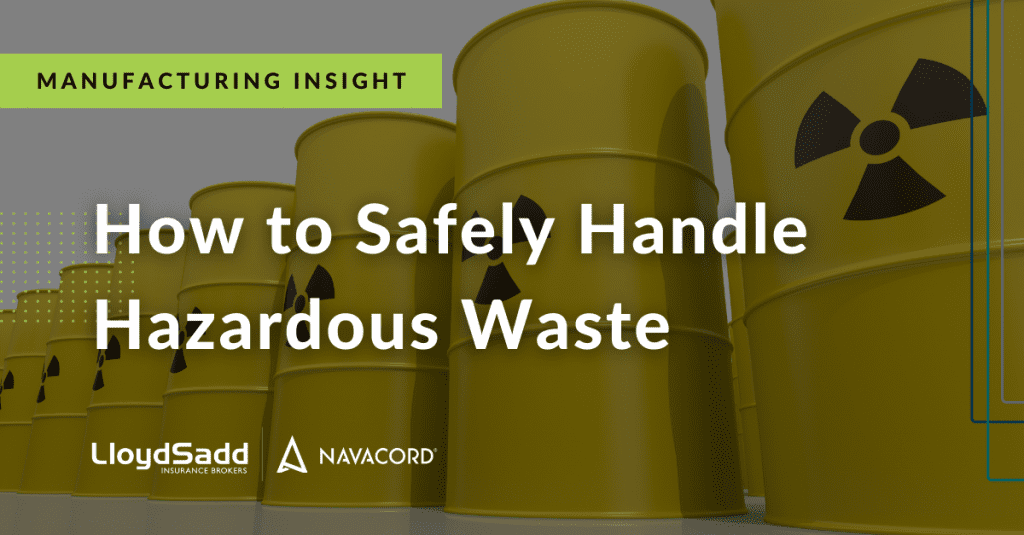How to Safely Handle Hazardous Waste

Every year, approximately 6 million tonnes of hazardous waste are produced in Canada. Hazardous waste includes a range of residues from industrial production—such as solvents, acids and bases—leftovers from oil refining, the manufacturing of chemicals and metal processing. The nature and concentration of certain chemicals in many wastes make them potentially dangerous to the environment and human health. As such, there are many risks involved with handling hazardous waste, so proper management is crucial.
Share the following safety measures for safely handling hazardous waste:
- Educate employees on safe operating procedures (SOPs). The SOP for hazardous waste should include information on the facility’s waste identification system; the waste’s hazardous characteristics (e.g., toxicity, fire, explosion or reactivity); the waste collection procedure, including how wastes are sorted and which can be mixed; safe waste storage; spill containment and cleanup; and first aid measures.
- Provide personal protective equipment (PPE). The proper PPE (e.g., gloves, face coverings, full-body suit) must be used when the situation requires it. These instances should be outlined in the SOP.
- Outline proper storage techniques. Each hazardous waste product should have a proper container specified on the SOP. Containers must only be opened in designated locations specified in the SOP. Unless in active use, always seal or close the hazardous waste containers.
- Ensure hazardous wastes aren’t mixed. Hazardous waste types should never be mixed unless approved by the SOP.
- Never pour waste down a sink or floor drain. This is especially important when disposing of a solution with a pH less than 6.0 or greater than 11.5, a solution consisting of two or more separate liquid layers, any liquid with a temperature greater than 60 degrees Celsius, acute hazardous waste chemicals, flammable or combustible liquids, biomedical waste, fuels, ignitable wastes, hazardous waste chemicals, pathological waste, pesticides, reactive waste, severely toxic waste and radioactive substances.
For more information on manufacturing safety practices and mitigating risks, contact Lloyd Sadd Insurance Brokers Ltd today.
To download the insight, click here: Manufacturing Insight_How to Safely Handle Hazardous Waste